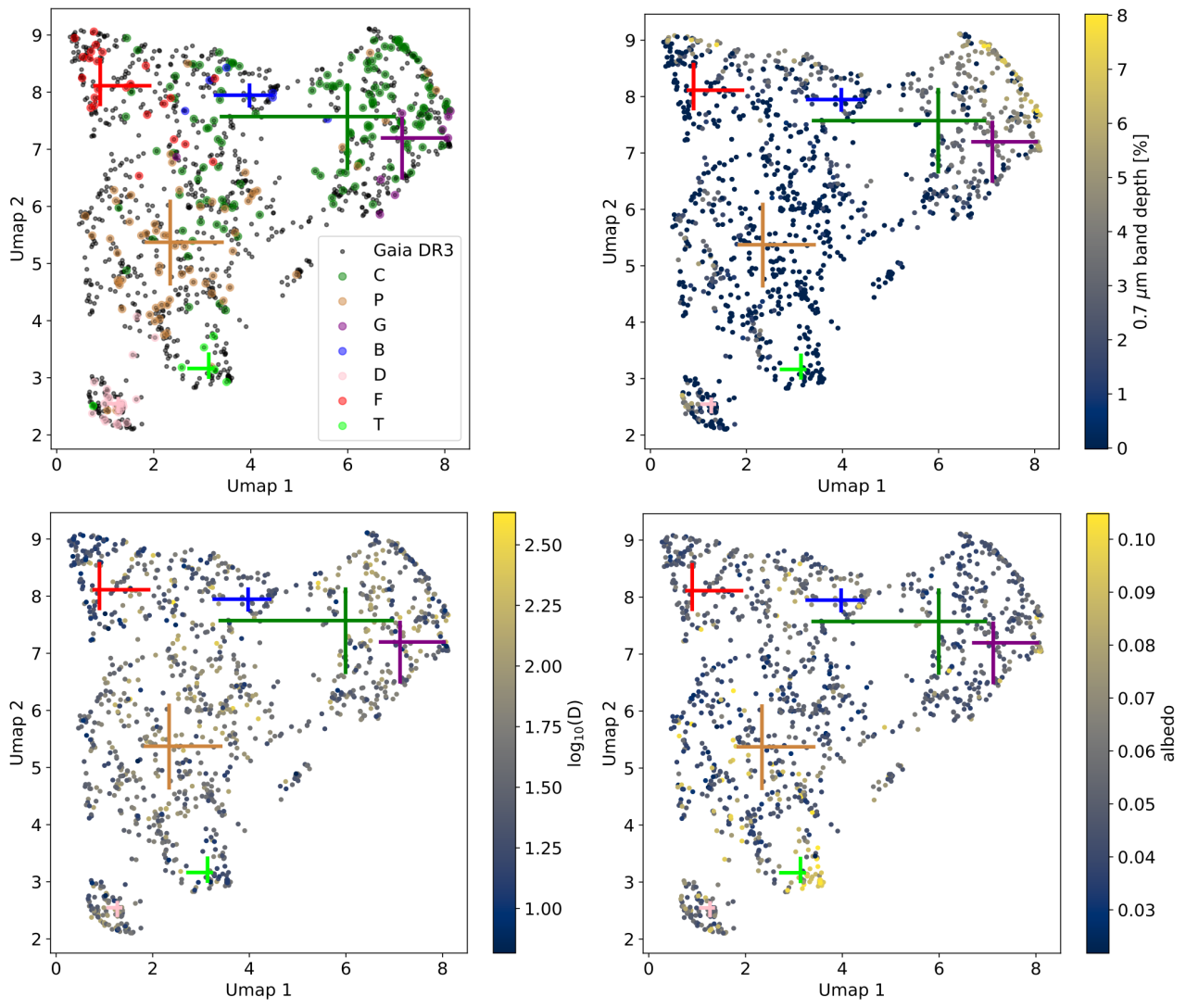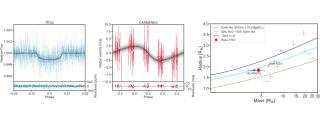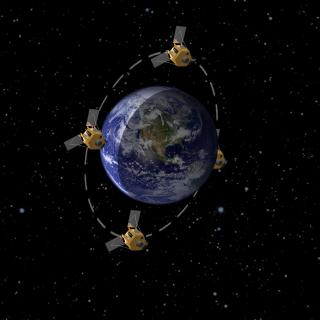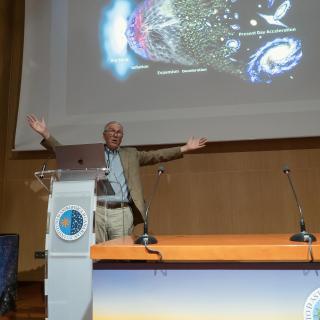2D representation of feature space composed by s, s2, (s2 − s3), and (s4 − s3), after applying UMAP. The upper left panel shows all available Gaia spectra in grey, and those classified by Tholen (1984) are overplotted in colors following the taxonomy code. Crosses correspond to the median for each taxonomy and the size of the error bars is the interquartile range in all the panels. In the upper-right and lower panels, we have added the following information: the computed depth of the 0.7 μm band (in %), the logarithm of the asteroid diameter in kilometers, and the albedo, with an associated color scale shown in the right of each panel. The axes do not have a physical interpretability due to the nonlinearity of the method.
Asteroids are the remnants of the planetary formation in the Solar System and so, their study helps us to understand the conditions during the early stages of the formation of our planetary system. Among asteroids, those classified as primitives present similar spectra to that of carbonaceous chondrites, i.e., they are rich in carbon and organic compounds and silicates altered by the presence of liquid water (phyllosilicates). Primitive asteroids are well characterized in various wavelength regions, showing their most diagnostic feature at 3μm. However, there is a lack of information in the near-UV region (between 0.35 and 0.5 μm), due, among other causes, to the low sensitivity of CCD detectors and the absorption of Earth’s atmosphere at these wavelengths. Despite this, the near-UV has been proposed as a region with high diagnostic possibilities in terms of composition, mainly after laboratory studies of carbonaceous meteorites and some limited observations using space telescopes.
In this work, we aim to explore the potential of the NUV as a diagnostic region for primitive asteroids using available spectra in Gaia DR3. To do that, we used a corrective factor over the blue part of Gaia spectra to erase a solar analog selection effect that we measured and corrected in a previous work. We also identified an artificial relation between the band noise and slope and applied a signal-to-noise ratio (S/N) threshold for Gaia bands. Meeting the quality standards, we employed a Markov chain Monte Carlo (MCMC) algorithm to compute the albedo threshold that maximizes the number of primitive asteroid in the sample.
Utilizing one- and two-dimensional (1D and 2D) projections, along with dimensionality-reduction methods (such as PCA and UMAP), we obtained the following new results: (a) the first observational evidence linking UV absorption to the 0.7 µm band, tied to hydrated iron-rich phyllosilicates; (b) a 2D space revealing a split in C-type asteroids based on spectral features, including UV absorption; and (c) a different beginning in the UV absorption for F-type asteroids versus C- and G-type asteroids. The computed average depth (3.5 ± 1.0 %) and center (0.70 ± 0.03 µm) of the 0.7 µm absorption band for primitive asteroids observed with Gaia is in agreement with the literature values.
Concluding, in this paper, we shed light on the importance of the UV absorption feature to discriminate among different mineralogies (i.e., iron-rich phyllosilicates vs. iron-poor) or to identify taxonomies that are conflated in the visible (i.e., F-types vs. B-types). We have shown that this is a promising region for diagnostic studies of the composition of primitive asteroids.



